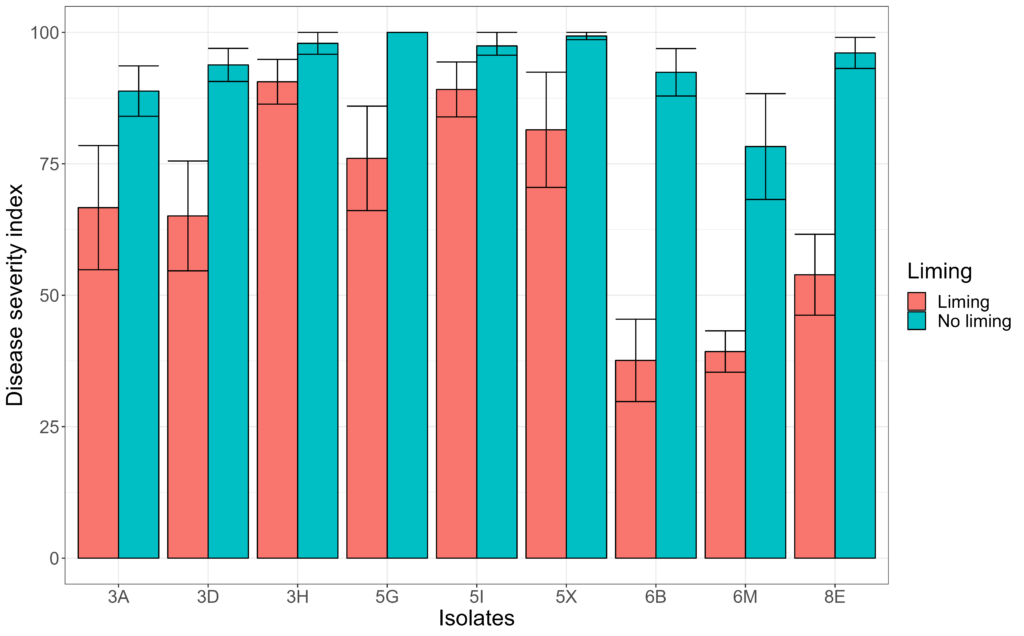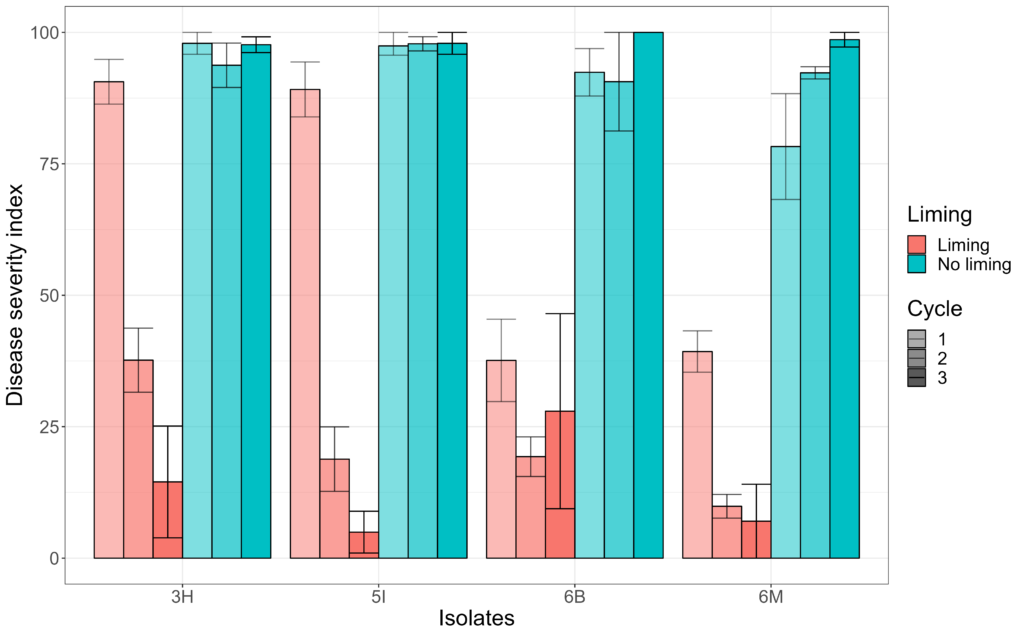Key Result
While liming may serve as an effective tool to complement host resistance, its potential utility is likely to be affected by field-specific conditions that need to be considered before growers invest in this approach.
Project Summary
Clubroot, caused by Plasmodiophora brassicae, is an important soilborne disease of canola managed mainly by planting resistant cultivars. Unfortunately, the widespread cultivation of resistant hosts has resulted in the emergence of new P. brassicae pathotypes that are able to overcome this resistance, highlighting the need for an integrated approach to clubroot control. The application of lime to increase soil pH represents a potential tool to complement resistance, since clubroot favors acidic soils.

To determine whether strains of the clubroot pathogen respond differentially to soil pH and whether pathogen strains can become adapted to high pH conditions, this research investigated:
(1) Does the application of lime have varying effects on different P. brassicae isolates?
(2) Can liming inadvertently select for pH-insensitive strains of the pathogen?
Methodology
To answer the first question, a clubroot-susceptible canola hybrid was grown under greenhouse conditions in a soil mixture with (pH 7.5) or without (pH 6.0) liming, and inoculated at high and low spore concentrations with each of nine field isolates representing various pathotypes of P. brassicae.
To answer the second question, consecutive cycles of infection were carried out using four field isolates of the pathogen selected based on the results of the first study.
The experiments were conducted under greenhouse conditions, and two resting spore concentrations were evaluated, 5 × 104 and 5 × 105 resting spores per g of soil mix. Hydrated lime was applied to adjust the pH of the soil mixture.
Results

At the higher spore concentration, the effect of lime application on disease severity index (DSI) was minimal. In contrast, at the lower spore concentration, liming was effective in reducing the DSI by an average of 27 points across all nine isolates. The extent of this reduction, however, was highly variable and depended on the isolate tested.
Resting spore quantification indicated that liming also reduced spore production per plant for all isolates, although there was no significant correlation with DSI. Over three cycles of infection in the absence of liming, DSI tended to increase in each cycle if it was not already at the maximum. On the other hand, DSI in the liming treatment generally decreased over the cycles. In most cases, the DSI continued to decrease until it reached values comparable with a resistant variety. However, for one isolate, an increase in DSI was detected between the second and third cycles. Trends similar to those observed for DSI were found with respect to resting spore production per plant over the multiple cycles of infection.
Conclusion
Clubroot isolates show differential sensitivity to liming based on disease severity index and resting spore production in a susceptible host. Repeated exposure to limed soil can increase or decrease the efficacy of liming, depending on the isolate, and this efficacy is also affected by the initial inoculum level in the soil.
Overall, liming on its own may not provide sufficient management of clubroot in soils that are highly infested with P. brassicae, but could be one tool in a multi-pronged approach. As well, the efficacy of liming in a specific field will depend on the sensitivity of the pathogen population, since different isolates of P. brassicae have varying sensitivity to liming.





